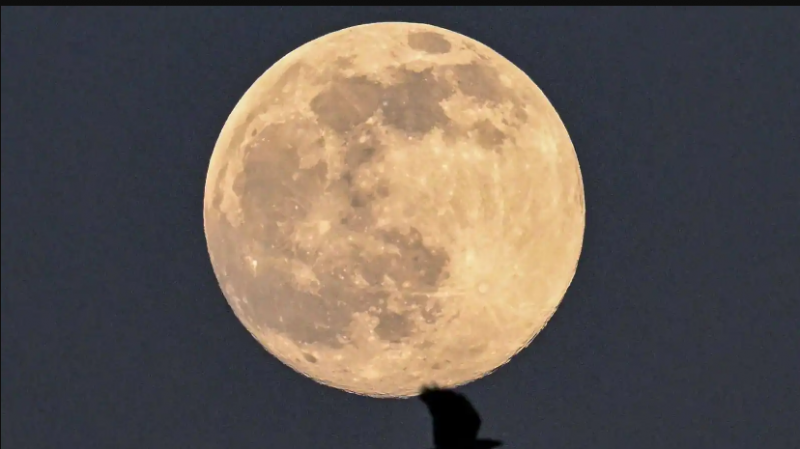
USA: This week's sky will be lit by the full moon. This constellation will be visible near the Regulus star in the direction of Leo. The full moon in March is also known as the "Worm Moon" and goes by several other names, including Crow, Crust, and Sap Moons. Why were these names chosen? Let's investigate.
In its orbit around Earth, the Moon is exactly 180 degrees opposite the Sun at full moon. In other words, the entire portion of the Moon that is in the Sun will be visible.
Many cultures around the world have given famous nicknames to the monthly full moon. For example, the full moon in February is called the Snow Moon.
Also Read: RuPay, UPI technologies are India's Identity in the World: PM Modi
The Native American names of the full moon were first published in the Maine Farmers' Almanac in the 1930s, and many people still use these names today.
The almanac states that American Indian tribes referred to the full moon in March as the Worm, Crow, Crust, or Sugar Moon. The worm moon is named after the period when earthworms and other insects emerge from their lairs in preparation for spring.
In reference to the caws of crows that signaled the end of winter, tribes in the northeastern United States called it the Crow Moon. Other northern names included Crust Moon (because the snow cover is crusty from thawing during the day and freezing during the night) and Sap (or Sugar) Moon (because the maple tree was being tapped at the time).
Also Read: Samsung launches a startup initiative in Israel for its mobile device products
In case of rain during the night, you can also see the moon bow. A lunar bow, also known as a lunar rainbow, appears when light from the Moon is refracted through water droplets in the air.
They are incredibly elusive and rarely seen. Keep in mind that moonlight is only visible after sunset when the full moon is low in the sky.
This year there will be 13 full moons as opposed to the usual 12 full moons. August will see two supermoons, the Sturgeon Moon and the Blue Moon. Because supermoons are closer to Earth than normal, they are brighter and appear larger in the sky.
Also Read: Hubble will survey the sky 1,000 times more slowly than the Roman Space Telescope
In this whole week, we will also see the conjunction of Venus-Jupiter. As soon as the moon rises, the planets will start setting. At dusk, closer to the western horizon, they should only be visible for about an hour.